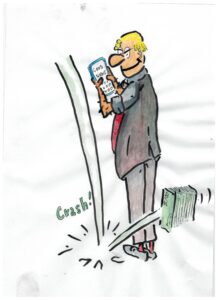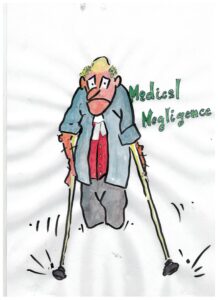What is a deed inter-parties or indenture?
- 2018-07-14
- By whiggs
- Posted in Contract Law, Contractual Interpretation, Deeds, featured, Other
A deed inter-parties is a deed which expressly states that it is made between two or more named persons.
The difference between a deed poll and a deed inter partes is absolutely crucial because of the difference as to who may enforce the deed in question. It is clear that any person named or sufficiently indicated in a deed poll may sue to enforce any obligation undertaken in that deed poll in his favour despite the fact that he is, by definition, not a party to the deed poll and has not executed the deed poll.
By contrast however a person cannot sue on a covenant made in his favour which is contained in a deed inter partes unless he is a party (and named as a party) to the relevant deed. Even if a third party executes a deed inter partes he cannot sue on it unless he is named as a party to the deed. The only way in which a person who is not a party to a deed inter partes can enforce a covenant in his favour contained in that deed is to come within one of the exceptions to the Doctrine of Privity e.g. he would be able to enforce the covenant if he was able to show that there was a completely constituted trust of the covenant in his favour.
Consequently it is vital where you are preparing a deed poll which is to be enforceable by third parties that you do not use language which suggests that there is more than one party to the deed and that it is a deed inter partes. For example avoid phrases such as “this deed is made between”. Conversely, if you are preparing a deed inter parties, make sure that any person who you wish to be able to enforce the deed is named as a party (unless one of the named parties is to be a trustee of the benefit of the deed for a third party beneficiary).
The other historical distinction was between a deed poll and an indenture. Whereas a deed poll, made by one party only, had a shaved or “polled” edge, an indenture, which was a deed to which two or more persons are parties and which evidenced some act, bargain, contract, conveyance, covenant or agreement between them other than the mere consent to join in expressing the same active intention (i.e. the joint and several guarantors example above), was a deed with serrated or indented (hence the term “indenture”) edges so that each party had a similar deed with the two parts being supposed to fit together as a sort of a tally.
The practice of indenting originated in early times when deeds were short; often a deed between parties would be written out two or more times (according to the number of parties) on a single sheet of parchment which was then divided by cutting it with an irregular edge so that each part could be fitted into the other to demonstrate its authenticity.
At first this rule was very strict and a deed executed before 1845 was not an indenture unless it was actually indented, even though it was stated to be an indenture. However in 1845 legislation in the UK was passed providing that a deed between parties has the effect of an indenture even though the parchment on which it is written was not actually indented.
Consequently for all practical purposes the term “indenture” is now a thing of the past and the only real important differentiation nowadays is between deed polls and deeds inter partes.
SEARCH BLOG POSTS
LATEST BLOG POSTS
- Updated product safety mandatory reporting guidance for suppliers now available
- Pleading fraud – cause and effect is essential
- Does the Trustee’s right of indemnity have priority over the right of beneficiaries in relation to assets?
- Rules of war (in a nutshell) | The Laws Of War
- MH370 Final Report
Past Blog Posts
- December 2021
- September 2021
- August 2021
- May 2021
- April 2021
- March 2021
- August 2020
- February 2020
- September 2019
- February 2019
- December 2018
- July 2018
- April 2018
- December 2017
- May 2017
- February 2017
- December 2016
- November 2016
- October 2016
- September 2016
- August 2016
- April 2016
- March 2016
- October 2015
- September 2015
- August 2015
- May 2014
- April 2014
- March 2014
- January 2014
Categories
- Appeals
- Artificial Intelligence
- Aviation law
- Banking and Finance Law
- Blogs
- Civil Liability Act
- Class Actions
- Coding for lawyers
- common law
- Consumer Claims (TPA)
- Contract Law
- Contractual Interpretation
- Criminal law
- Deeds
- Docassemble
- duty of care
- Engineering Law
- Equity
- Evidence
- Exclusion Clauses
- Execution of documents
- Expert Witness
- featured
- Financial Services
- Fraud
- Fundraising (Chapter 6D)
- General comment
- Home Building Law
- Insurance
- Legal drafting
- Local Court
- Medical Negligence
- MH370
- Motor Accidents
- Negligence
- Occupiers negligence
- Other
- Personal Injury
- Personal Property Securities (PPSA)
- Pleading
- Practice & Procedure
- Products Liability
- Property
- Real Property
- Reasons for a decision
- Securitisation
- Security (Mortgages & Charges)
- Sentencing
- Swaps & Derivatives
- Teaching
- Transactional Law
- Transfer of financial assets in transactions
- Trusts & Trustee Law
- Uncategorized
- War and Weaponry
- Witnesses
SEARCH BLOG POSTS
LATEST BLOG POSTS
- Updated product safety mandatory reporting guidance for suppliers now available
- Pleading fraud – cause and effect is essential
- Does the Trustee’s right of indemnity have priority over the right of beneficiaries in relation to assets?
- Rules of war (in a nutshell) | The Laws Of War
- MH370 Final Report
Past Blog Posts
- December 2021
- September 2021
- August 2021
- May 2021
- April 2021
- March 2021
- August 2020
- February 2020
- September 2019
- February 2019
- December 2018
- July 2018
- April 2018
- December 2017
- May 2017
- February 2017
- December 2016
- November 2016
- October 2016
- September 2016
- August 2016
- April 2016
- March 2016
- October 2015
- September 2015
- August 2015
- May 2014
- April 2014
- March 2014
- January 2014
Categories
- Appeals
- Artificial Intelligence
- Aviation law
- Banking and Finance Law
- Blogs
- Civil Liability Act
- Class Actions
- Coding for lawyers
- common law
- Consumer Claims (TPA)
- Contract Law
- Contractual Interpretation
- Criminal law
- Deeds
- Docassemble
- duty of care
- Engineering Law
- Equity
- Evidence
- Exclusion Clauses
- Execution of documents
- Expert Witness
- featured
- Financial Services
- Fraud
- Fundraising (Chapter 6D)
- General comment
- Home Building Law
- Insurance
- Legal drafting
- Local Court
- Medical Negligence
- MH370
- Motor Accidents
- Negligence
- Occupiers negligence
- Other
- Personal Injury
- Personal Property Securities (PPSA)
- Pleading
- Practice & Procedure
- Products Liability
- Property
- Real Property
- Reasons for a decision
- Securitisation
- Security (Mortgages & Charges)
- Sentencing
- Swaps & Derivatives
- Teaching
- Transactional Law
- Transfer of financial assets in transactions
- Trusts & Trustee Law
- Uncategorized
- War and Weaponry
- Witnesses




